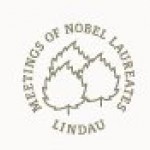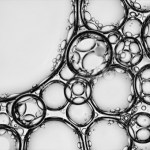Chemistry
Phew. The fourth day in Lindau is about to end and I think I speak for everybody when I say extreme humidity is not exactly our favourite aggregate state concerning the weather in this town. Nevertheless we've had another great day at the Nobel Laureates Meeting and would like to share thus with you, fellow readers:
Two laureates have been portrayed by our bloggers today: The young chemist Oliver Schuster met Aaron Ciechanover and listened to his very philosophical remarks on modern medicine. Then our very active guest blogger from the US, Ashutosh Jogalekar, portayed Sir Harry Kroto and…
I love it when new readers stumble upon old posts.
Such was the case when I received the following delightful comment from Seattle-based psychologist, Dr Gary Grenell, on my April 2008 post about the passing of Dr Charlotte Tan, a pediatric cancer chemotherapy pioneer:
I was probably in one of her earliest actionmycin-D trial groups for Wilms tumor in 1957. Now at age 55, 52 years later, still going strong!
Most of you scientific youngsters today probably only know of actinomycin D as a laboratory tool for inhibiting RNA synthesis. But here in the following repost, learn about the…
Ask an informed layman what he or she thinks is the greatest science-based industrial discovery or invention of all time and the person will likely name the computer, the transistor, the telephone, the incandescent light or perhaps even the blast furnace. But key as all these inventions were to humanity's progress, there is perhaps one industrial discovery that surpasses them in the sheer earth-shattering and fundamental change it brought about not only in the struggles of human survival but in the bedrock of our very existence on this planet. That discovery is the discovery of the means to…
When the chemist Wilhelm Ostwald received the Nobel prize for his research on catalysis in 1909 he probably didn't expect that his field of work would still be one of the most important topics in modern chemistry one hundred years later. Nevertheless all three Nobel Prizes in chemistry in the last years were given to scientists that worked in catalysis research.
One of them, Gerhard Ertl will be giving a talk on the catalysis happening when solids are coated with gossamer surfaces. The scientist got the Nobel prize in 2007 and named his speech "From atoms to complexity - reactions on surfaces…
Annually focusing on a different discipline, the Nobel Laureates meet in Lindau (Southern Germany). This year's meeting is going to be about chemistry and we, the editors of ScienceBlogs.de will be covering all events along with seven blogging scientists.
Although there will of course be lots of articles in German, we also launched an English section of the blog in which the most interesting articles will be translated - may the readers of this site forgive occasional bumpiness in our language skills.
As mentioned earlier here, PZ Myers will also attend the conference. The main topic of this…
Sometimes art doesn't need to be complicated. Shawn Knol's simple videos of oil in water capture fascinating patterns reminiscent of dividing cells, budding spores or lava lamps, depending on your mood. His newest, Psycho Bubble (above), was just released a few days ago.
"A lot of people are asking how I did this. It's pretty simple. I just put the camera on its lowest jpeg setting, placed the camera into continuous mode, and locked the shutter down with my wired remote. The oil is being dumped into a tall cylindrical glass, with about a cup of water in it. The whole thing is lit from…
"Hey, buddy! My eyes are up here!"
Just a quick reminder that the voting is still open for the 3 Quarks Daily contest for the best science blogging of the past year.
My post How does salt melt snails? currently has 15 votes, which is not enough to push it into the top-20 vote-getters and move it on to the judging round..
If you haven't voted yet, you still can (until June 8, midnight Eastern time). How about showing a little love for my scientific explanation of gastropod destruction?
Since the school science fair is safely behind us, we can give you a peek at the projects the Free-Ride offspring presented. (We couldn't do this prior to the science fair without running the risk that the sprogs would be accused of lifting their projects from a blog post.)
Here's the elder Free-Ride offspring's project board (or at least the central panel of it):
Originally, the idea was just to grow different kinds of crystals and draw some conclusions on why different types of substance grow the kinds of crystals that they do. However, that was deemed not sufficiently quantitative. So…
A recent discussion with some of my neuropharmacology colleagues led me to go back through the cobwebs and revisit the Terra Sig archives for posts on drugs of abuse. The following was my third post ever and the first on actual scientific substance (the first two were introductions: a hello post and an explanation of what the heck Terra Sigillata actually is).
The following post appeared at the Blogspot home of Terra Sigillata on 26 December 2005.
Let me start by saying that the draconian US laws in the 'war against drugs' would ever prevent the following from happening here:
Sounds like a…
Question: Did you know that there are National Historic Chemical Landmarks?
Answer: Yes, there are.
Question: What did the American Chemical Society declare to be its first National Historic Chemical Landmark, and where can you find it?
Answer: "Old Faithful", a Bakelizer or steam pressure vessel, vintage 1909. Phenol and formaldehyde were hardened at 150 C and 100 psi and voila! commercial quantities of Bakelite were the product. You can find it at the museum at the Chemical Heritage Foundation in Philadelphia.
I spent several delightful hours there yesterday afternoon and could…
Some of the other blog sites have talked about physics vs. chemistry. It seems this started with The experimental Error blog. Tom at Swans on Tea added a very excellent point to the discussion and the discussion continues at Uncertain Principles.
So, here is my take on the subject. Physics essentially deals with the fundamental stuff. You know, Maxwell's equations, the four forces, the particles, quantum mechanics. Chemistry is the study of substances and their interactions. First, let me attack chemistry. Here are some things I don't like:
Photo electron. What is a photo electron?…
In light of our recent snail eradication project:
Why does salt "melt" snails and slugs? (And how do people manage to prepare escargot without ending up with a big pot of goo?)
To answer this question, let us consider the snail as seen by the chemist:
The snail is an animal whose sliding-along-the-plants part (the foot) is made up of cells. Animal cells are, roughly, bags of aqueous solution and organelles wrapped in phospholipid bilayers (the cell membranes). For what we're looking at here, the important thing to know is that cell membranes are semipermeable membranes: some stuff travels…
You know and I know that science is cool, but for some reason kids can be suspicious of our declarations to this effect. (Maybe it has to do with our enthusiasm for vegetables that they don't like, not to mention naps.)
However, Susan the Scientist is on a mission to let kids know that science rocks! Here's a taste:
Using science experiments to solve problems that come up in everyday life is cool. Playing with fire is cooler. (I dig the music, too, but let's pretend I didn't say that, lest it convince the kids that the music is lacking that Jonas sais quoi.)
Of course, Susan the…
Tomorrow being Easter, a day on which there is some expectation that there will eggs for which to hunt in the backyard (weather permitting), the Free-Ride offspring and I decorated some eggs. We had an old package of oil-based dyes to make "swirled" eggs (the basic idea being that you float drops of the dye on top of cold water, then lowers the egg into the patches of dye, creating a sort of Jackson Pollock swirly effect on the shell).
But for the next dozen eggs, we thought we'd try something a little different. So we gathered some plant materials we thought might have pigments that we…
Today I decided to play with some chemicals I ordered to try to spherify V-8. It's the molecular gastronomy thing where you mix a liquid with sodium alginate, then drip it into an aqueous solution of calcium chloride to get the juice-alginate mixture to gel, forming a skin around a liquid center.
My first attempt did not produce the results I was shooting for.
First off, my kitchen scale, a lovely little device that measures with a precision of 1/8 ounce or 1 gram, is not great for measuring tenths of grams. Who knew that I'd miss Mettler balances (and weighing boats)?
Second of all, V-8,…
"The [Environmental Justice (EJ)] movement," writes Gwen Ottinger, "was galvanized in the early 1980s by the observation that toxic chemicals and other environmental hazards are concentrated in communities of color. EJ activists, many of them veterans of the civil rights movement, began to argue that social equality demanded an end to this 'environmental racism.' Currently, however, it is not equality but health that dominates grassroots activists' campaigns against chemical contamination."
Ottinger is a fellow at the Chemical Heritage Foundation's (CHF) Center for Contemporary History and…
Welcome 4 March readers of The Daily Grail - please be sure to also click on the original post about the DMT article by my colleague, Laura Mariani.
Thanks to Dave Munger & Co's ResearchBlogging.org, I just found a fabulous neuroscience grad student blogger from Emory University: Laura E Mariani at Neurotypical?
Doctor-to-be Mariani blogged last Monday about a paper in Science where the endogenous ligand of the orphan sigma-1 receptor was identified as the hallucinogen, N,N'-dimethyltryptamine, or DMT. The work originated with the group of Arnold Ruoho and colleagues at the University…
Yes, this is what happens when two scientists stay home on Valentine's evening. PharmGirl just fed me the story from CNN about the San Jose high school kid who died yesterday after being taken unconscious from his house on Thursday.
The national and local stories indicate that "two pans containing hydrogen sulfide were found on a table in the teenager's bedroom."
Hydrogen sulfide, H2S, is a gas, one that smells of rotting eggs.
The only way it could be in liquid form is if it were bubbled through water or some other solvent.
But why would a kid have pans of liquid with H2S?
My gut made me…
A conversation that bubbled up at the dinner table last night, some time after the Free-Ride offspring were informed that the cassoulet they were eating had, as one of its ingredients, white wine.
Younger offspring: Why do they call booze "spirits"?
Dr. Free-Ride's better half: I think that goes back to the early days of distillation. Do you know what distillation is?
Elder offspring: Ummm...
Dr. Free-Ride's better half: OK, to distill something, you have a container of the thing it is you're distilling. You apply heat to that container, and it's attached to a tube that's usually surrounded…
(Written for the inaugural edition of the Diversity in Science blog carnival, with big thanks to DNLee for launching it.)
Back in the spring and autumn of 1992, I was a chemistry graduate student starting to believe that I might actually get enough of my experiments to work to get my Ph.D. As such, I did what senior graduate students in my department were supposed to do: I began preparing myself to interview with employers who came to my campus (an assortment of industry companies and national labs), and I made regular visits to my department's large job announcement binder (familiarly…


